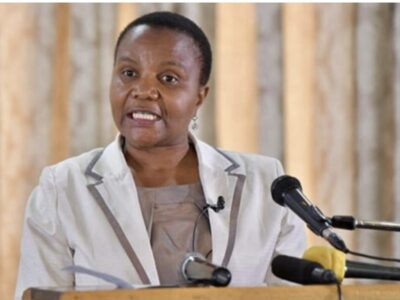The Government has vowed to stamp out cotton side marketing, a practice it says nearly brought Zimbabwe’s cotton industry to its knees. Speaking at a post-Cabinet media briefing on Tuesday, Lands, Agriculture, Fisheries, Water and Rural Development Minister Dr Anxious Masuka described side marketing as a “cancer” that continues to threaten one of the country’s most vital agricultural sectors.
Side marketing refers to a form of contract breach where farmers, after receiving inputs from contractors, sell their cotton to third parties instead of their financiers. This practice undermines the integrity of the contract farming system and has historically deterred private sector investment. The consequences were severe: by 2014, cotton output had plummeted to just 28,000 tonnes — the lowest in nearly 20 years.
“The 2015 season almost collapsed the cotton sector, and Government is trying to re-establish confidence within the cotton contracting system by eliminating side marketing,” said Dr Masuka. “But side marketing is a cancer.”
The Government stepped in with a lifeline — the Presidential Free Inputs Programme — which revived cotton production by providing farmers with free inputs, reigniting hope for an industry once regarded as the “white gold” of rural Zimbabwe. Today, the crop supports the livelihoods of over 400,000 smallholder farmers and feeds into critical industries including textiles, oil processing, and stockfeed.
Dr Masuka emphasised the strategic importance of cotton, calling it a cornerstone for Zimbabwe’s rural transformation.
“Cotton is a national strategic crop, and its importance cannot be overemphasised. It is a key driver of rural industrialisation and transformation, and a critical pillar in Zimbabwe’s agricultural economy,” he said.
With the 2025 marketing season having officially opened on June 9, approximately 311 tonnes of cotton have already been sold to seven registered contractors. In a bid to enhance transparency and accountability, the Agricultural Marketing Authority (AMA) has been tasked with overseeing the sector through a new approach that balances regulation with inclusive growth.
“So it is in this way that when we do regulate the cotton sector through the Agricultural Marketing Authority, we regulate the sector for growth. So that’s critical, the transformation to regulating for growth. And in that regulating for growth, there must be financial inclusivity,” said Dr Masuka.
To support this vision, AMA has rolled out more than 600 common buying points across the country. These hubs aim to centralise cotton transactions, ensure fair pricing, and facilitate electronic payments.
“We call them common buying points because all the services are provided by AMA,” Dr Masuka explained. “To regulate for growth, you carefully select these sites, you bring everyone, the seven contractors, to one place. You entice various platforms that are able to provide electronic payment to farmers so that there is competition, hopefully, because transaction costs come down and everyone is included.”
Dr Masuka did not mince his words when addressing those undermining the system. He noted that side marketing was not only committed by farmers but also by some contracting companies, warning that the Government would not tolerate actions that derail sector recovery.
As Zimbabwe moves to stabilise and grow its cotton industry, authorities are betting on stricter regulation, strategic coordination, and inclusive financial systems to eliminate the loopholes that nearly destroyed it a decade ago.














Comments